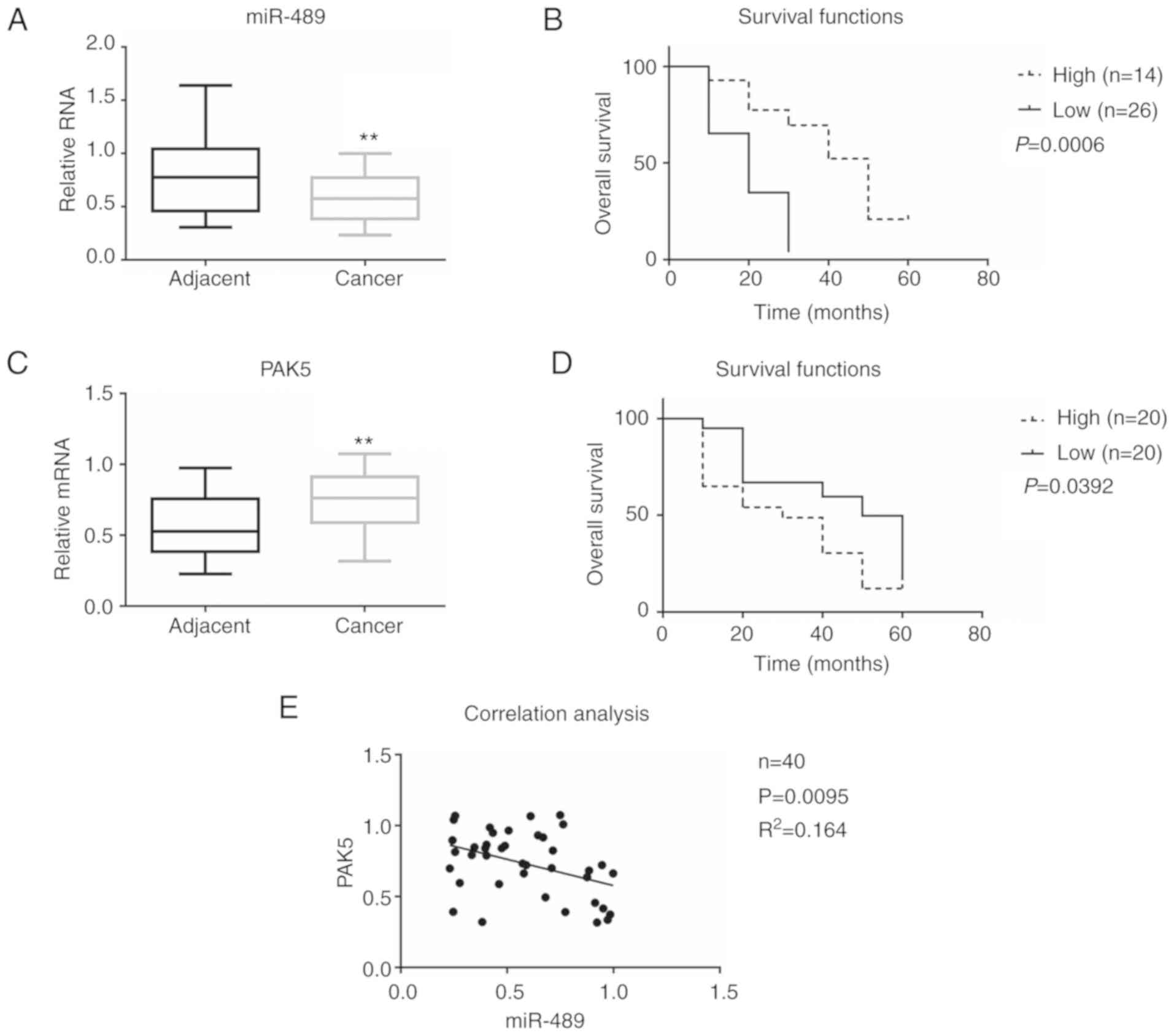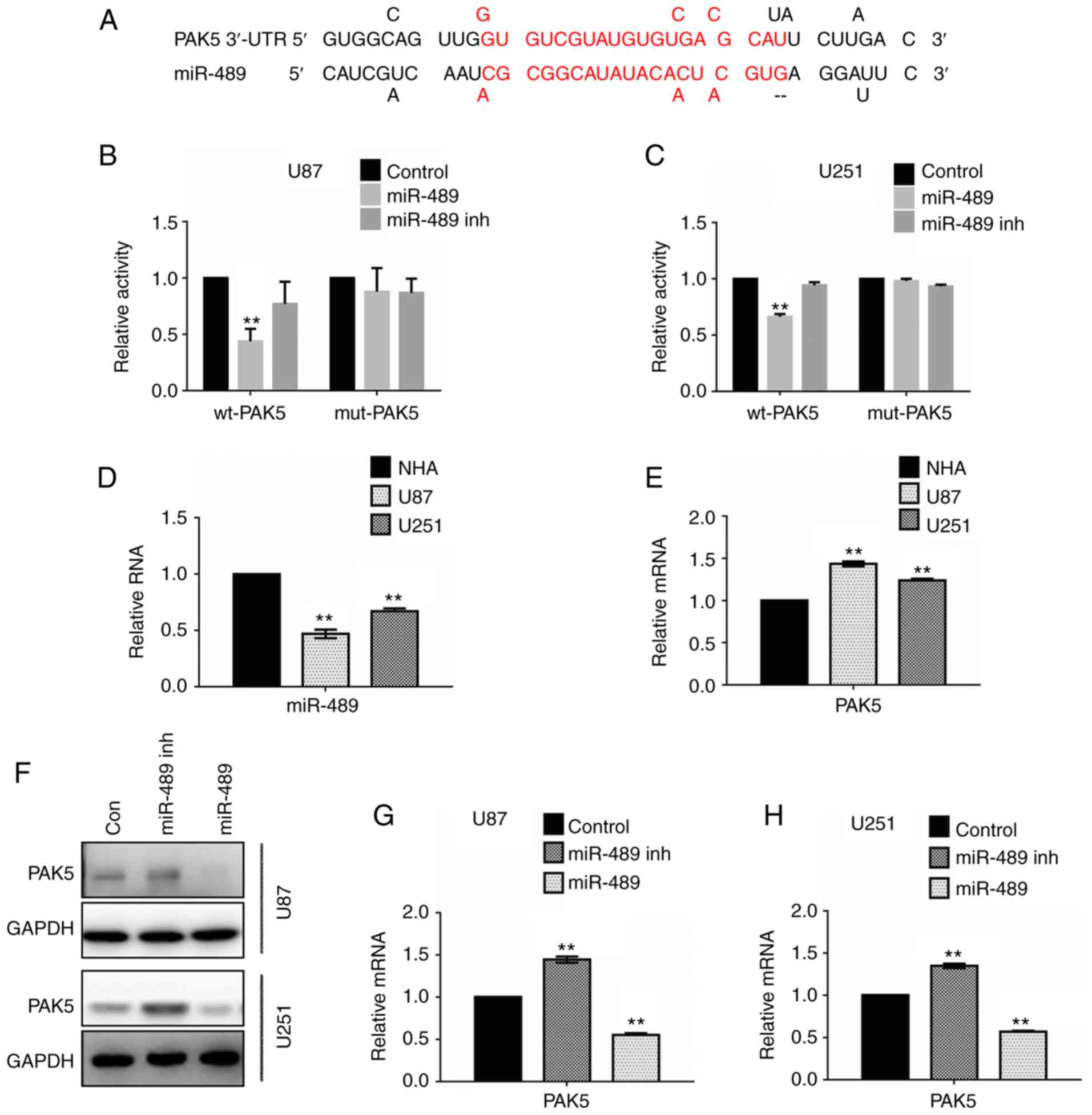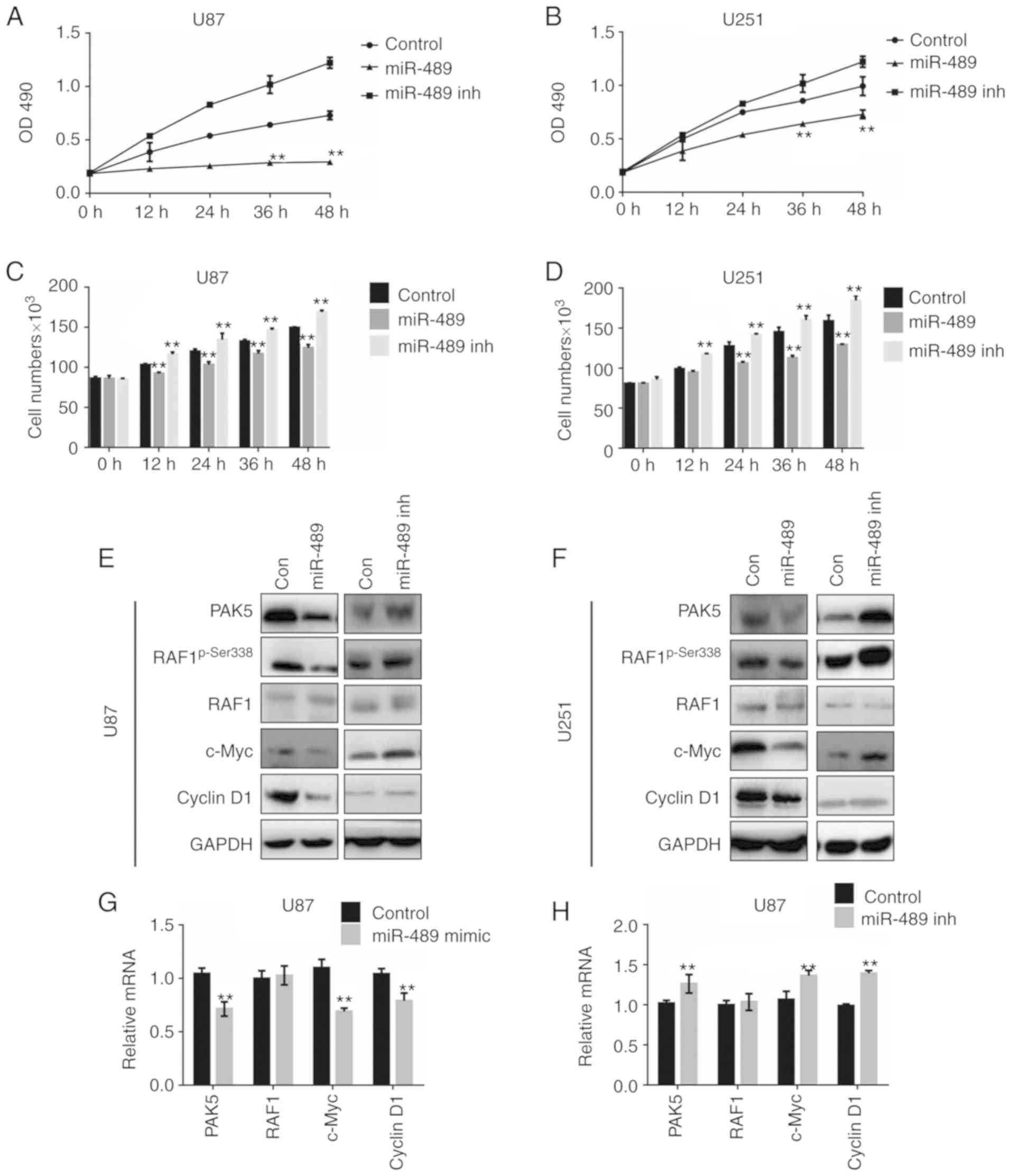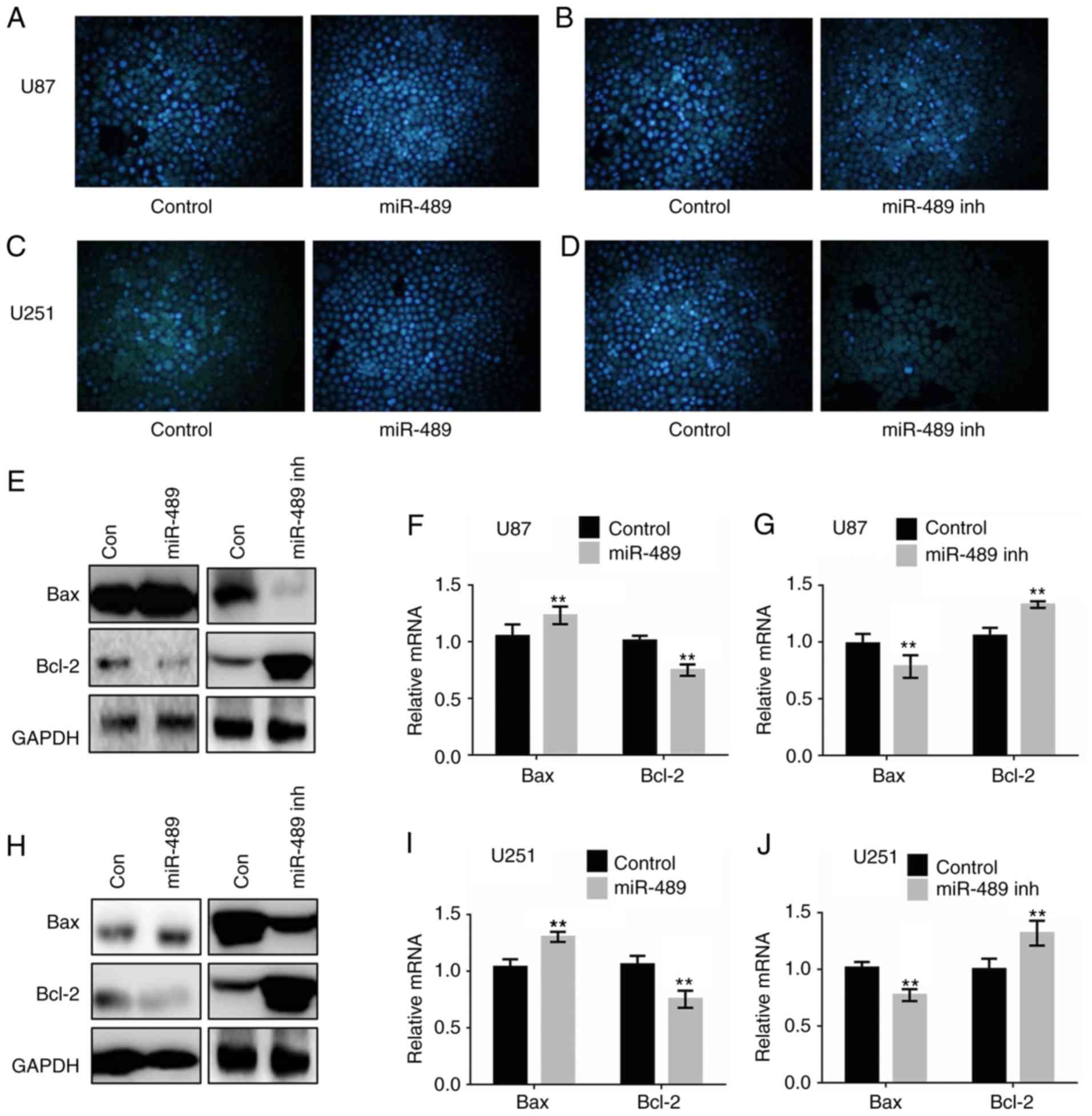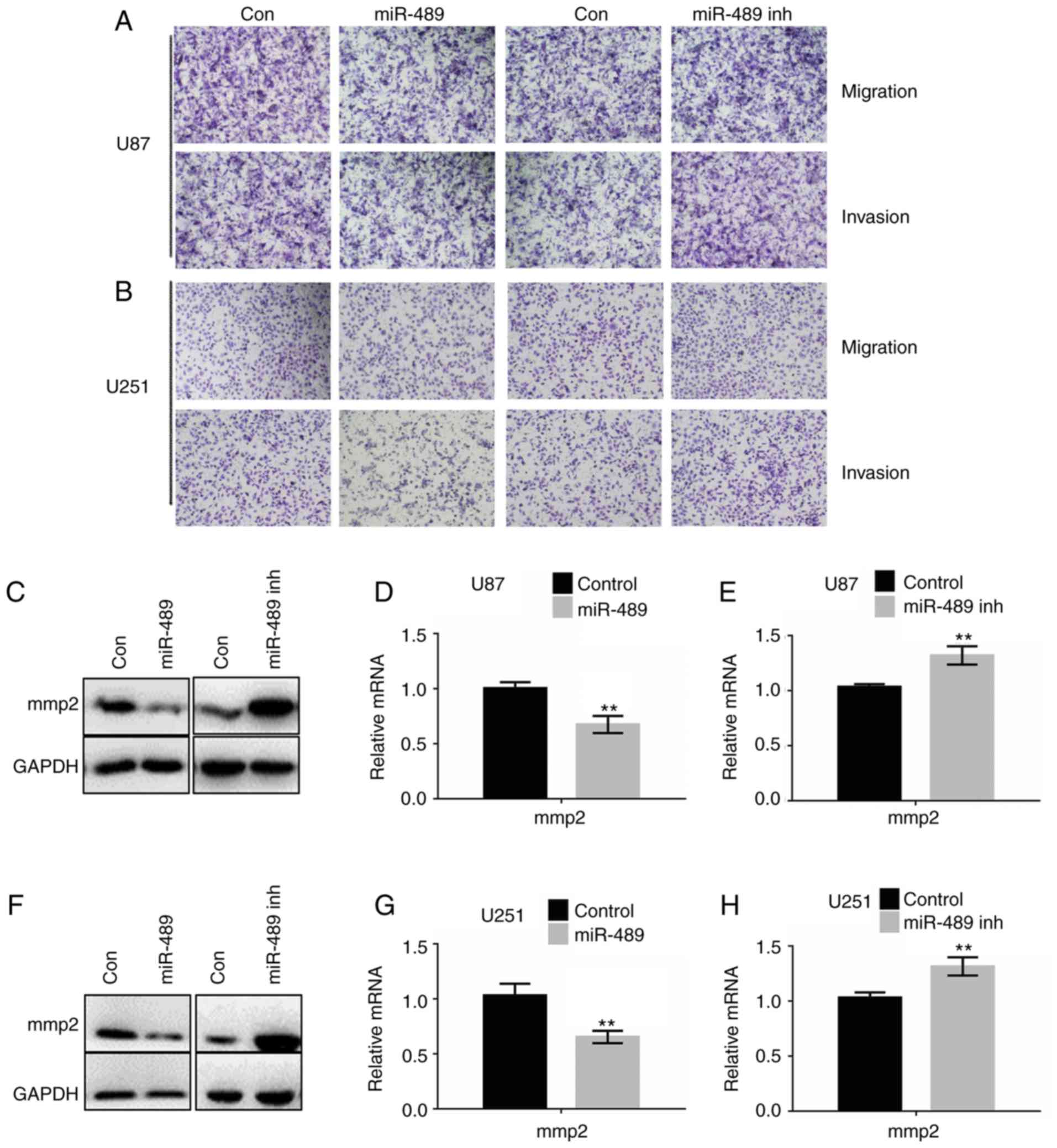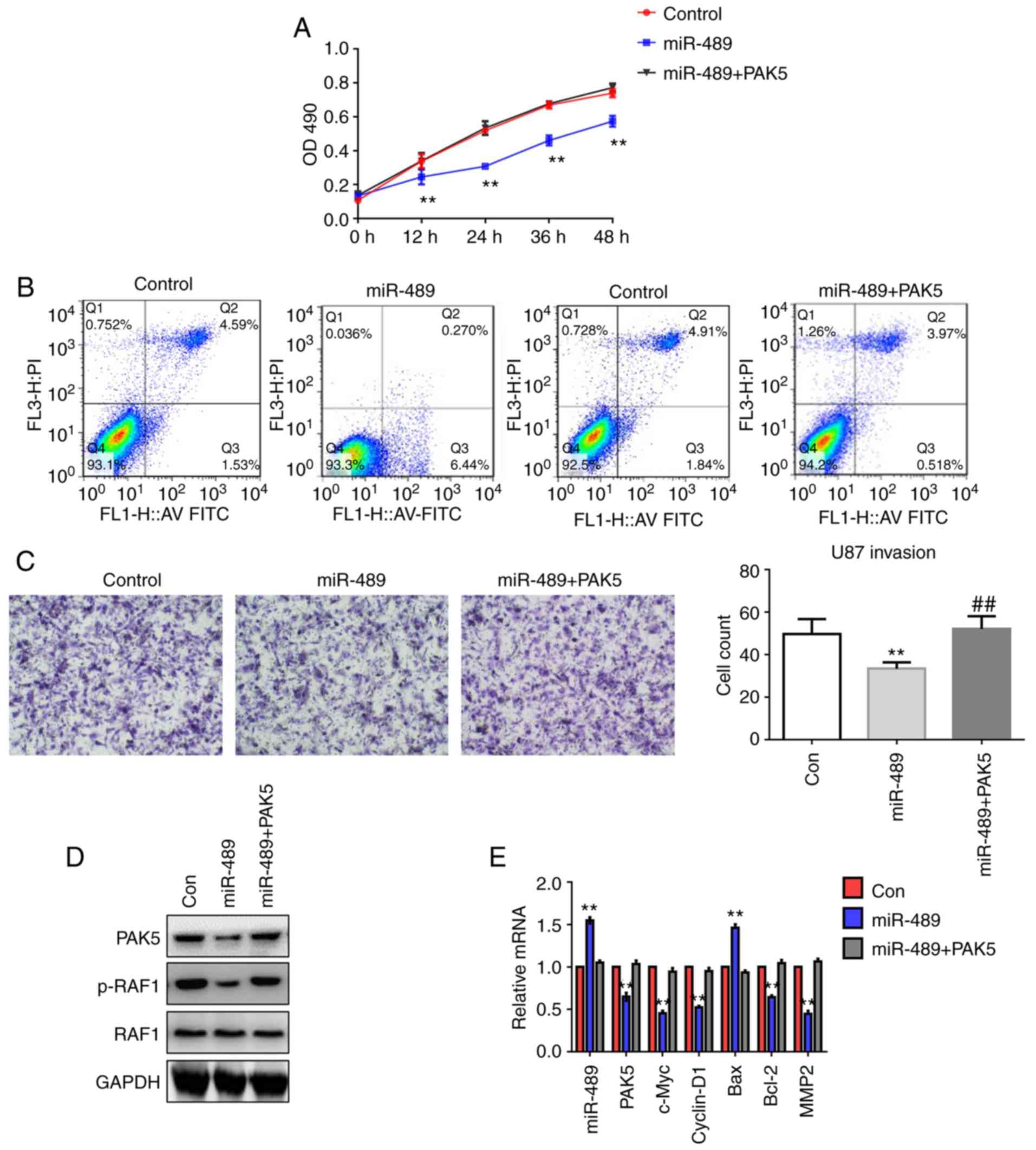|
1
|
Kumar V, Kumar V, McGuire T, Coulter DW,
Sharp JG and Mahato RI: Challenges and recent advances in
medulloblastoma therapy. Trends Pharmacol Sci. 38:1061–1084. 2017.
View Article : Google Scholar : PubMed/NCBI
|
|
2
|
Louis DN, Perry A, Reifenberger G, von
Deimling A, Figarella-Branger D, Cavenee WK, Ohgaki H, Wiestler OD,
Kleihues P and Ellison DW: The 2016 world health organization
classification of tumors of the central nervous system: A summary.
Acta Neuropathol. 131:803–820. 2016. View Article : Google Scholar : PubMed/NCBI
|
|
3
|
Lapointe S, Perry A and Butowski NA:
Primary brain tumours in adults. Lancet. 392:432–446. 2018.
View Article : Google Scholar : PubMed/NCBI
|
|
4
|
Lombardi MY and Assem M: Glioblastoma
Genomics: A very complicated storyGlioblastoma. De Vleeschouwer S:
Chapter 1. Codon Publications; Brisbane (AU): 2017, https://www.ncbi.nlm.nih.gov/books/NBK470004/doi:
10.15586/codon.glioblastoma.2017.ch1.
|
|
5
|
Ha BH, Morse EM, Turk BE and Boggon TJ:
Signaling, regulation, and specificity of the type II p21-activated
kinases. J Biol Chem. 290:12975–12983. 2015. View Article : Google Scholar : PubMed/NCBI
|
|
6
|
Wen YY, Zheng JN and Pei DS: An oncogenic
kinase: Putting PAK5 forward. Expert Opin Ther Targets. 18:807–815.
2014. View Article : Google Scholar : PubMed/NCBI
|
|
7
|
Gu X, Wang C, Wang X, Ma G, Li Y, Cui L,
Chen Y, Zhao B and Li K: Efficient inhibition of human glioma
development by RNA interference-mediated silencing of PAK5. Int J
Biol Sci. 11:230–237. 2015. View Article : Google Scholar : PubMed/NCBI
|
|
8
|
Han ZX, Wang XX, Zhang SN, Wu JX, Qian HY,
Wen YY, Tian H, Pei DS and Zheng JN: Downregulation of PAK5
inhibits glioma cell migration and invasion potentially through the
PAK5-Egr1-MMP2 signaling pathway. Brain Tumor Pathol. 31:234–241.
2014. View Article : Google Scholar : PubMed/NCBI
|
|
9
|
Wang X: Improving microRNA target
prediction by modeling with unambiguously identified
microRNA-target pairs from CLIP-ligation studies. Bioinformatics.
32:1316–1322. 2016. View Article : Google Scholar : PubMed/NCBI
|
|
10
|
Wen MM: Getting miRNA therapeutics into
the target cells for neurodegenerative diseases: A mini-review.
Front Mol Neurosci. 9:1292016. View Article : Google Scholar : PubMed/NCBI
|
|
11
|
Zhang L, Wang Q, Wang F, Zhang X, Zhang L,
Tang Y and Wang S: LncRNA LINC01446 promotes glioblastoma
progression by modulating miR-489-3p/TPT1 axis. Biochem Biophys Res
Commun. 503:1484–1490. 2018. View Article : Google Scholar : PubMed/NCBI
|
|
12
|
Xu D, Liu R, Meng L, Zhang Y, Lu G and Ma
P: Long non-coding RNA ENST01108 promotes carcinogenesis of glioma
by acting as a molecular sponge to modulate miR-489. Biomed
Pharmacother. 100:20–28. 2018. View Article : Google Scholar : PubMed/NCBI
|
|
13
|
Li Y, Ma X, Wang Y and Li G: MiR-489
inhibits proliferation, cell cycle progression and induces
apoptosis of glioma cells via targeting SPIN1-mediated PI3K/AKT
pathway. Biomed Pharmacother. 93:435–443. 2017. View Article : Google Scholar : PubMed/NCBI
|
|
14
|
Fawdar S, Trotter EW, Li Y, Stephenson NL,
Hanke F, Marusiak AA, Edwards ZC, Ientile S Waszkowycz B, Miller CJ
and Brognard J: Targeted genetic dependency screen facilitates
identification of actionable mutations in FGFR4, MAP3K9, and PAK5
in lung cancer. Proc Natl Acad Sci USA. 110:12426–12431. 2013.
View Article : Google Scholar : PubMed/NCBI
|
|
15
|
Wong N and Wang X: MiRDB: An online
resource for microRNA target prediction and functional annotations.
Nucleic Acids Res. 43:D146–D152. 2015. View Article : Google Scholar : PubMed/NCBI
|
|
16
|
Wu X, Carr HS, Dan I, Ruvolo PP and Frost
JA: P21 activated kinase 5 activates Raf-1 and targets it to
mitochondria. J Cell Biochem. 105:167–175. 2008. View Article : Google Scholar : PubMed/NCBI
|
|
17
|
Chai Z, Fan H, Li Y, Song L, Jin X, Yu J,
Li Y, Ma C and Zhou R: MiR-1908 as a novel prognosis marker of
glioma via promoting malignant phenotype and modulating SPRY4/RAF1
axis. Oncol Rep. 38:2717–2726. 2017. View Article : Google Scholar : PubMed/NCBI
|
|
18
|
Lee SH, Lee EH, Lee SH, Lee YM, Kim HD and
Kim YZ: Epigenetic role of histone 3 lysine methyltransferase and
demethylase in regulating apoptosis predicting the recurrence of
atypical meningioma. J Korean Med Sci. 30:1157–1166. 2015.
View Article : Google Scholar : PubMed/NCBI
|
|
19
|
Filbin MG and Suva ML: Gliomas genomics
and epigenomics: Arriving at the start and knowing it for the first
time. Annu Rev Pathol. 11:497–521. 2016. View Article : Google Scholar : PubMed/NCBI
|
|
20
|
Alifieris C and Trafalis DT: Glioblastoma
multiforme: Pathogenesis and treatment. Pharmacol Ther. 152:63–82.
2015. View Article : Google Scholar : PubMed/NCBI
|
|
21
|
Karsy M, Guan J, Sivakumar W, Neil JA,
Schmidt MH and Mahan MA: The genetic basis of intradural spinal
tumors and its impact on clinical treatment. Neurosurg Focus.
39:E32015. View Article : Google Scholar : PubMed/NCBI
|
|
22
|
Soni M, Patel Y, Markoutsa E, Jie C, Liu
S, Xu P and Chen H: Autophagy, cell viability, and chemoresistance
are regulated by miR-489 in breast cancer. Mol Cancer Res.
16:1348–1360. 2018. View Article : Google Scholar : PubMed/NCBI
|
|
23
|
Jiang L, He D, Yang D, Chen Z, Pan Q, Mao
A, Cai Y, Li X, Xing H, Shi M, et al: MiR-489 regulates
chemoresistance in breast cancer via epithelial mesenchymal
transition pathway. FEBS Lett. 588:2009–2015. 2014. View Article : Google Scholar : PubMed/NCBI
|
|
24
|
Chen X, Wang YW, Xing AY, Xiang S, Shi DB,
Liu L, Li YX and Gao P: Suppression of SPIN1-mediated PI3K-Akt
pathway by miR-489 increases chemosensitivity in breast cancer. J
Pathol. 239:459–472. 2016. View Article : Google Scholar : PubMed/NCBI
|
|
25
|
Patel Y, Shah N, Lee JS, Markoutsa E, Jie
C, Liu S, Botbyl R, Reisman D, Xu P and Chen H: A novel
double-negative feedback loop between miR-489 and the
HER2-SHP2-MAPK signaling axis regulates breast cancer cell
proliferation and tumor growth. Oncotarget. 7:18295–18308. 2016.
View Article : Google Scholar : PubMed/NCBI
|
|
26
|
Kuppa SS, Jia W, Liu S, Nguyen H, Smyth
SS, Mills GB, Dobbin KK, Hardman WJ and Murph MM: Autotaxin
exacerbates tumor progression by enhancing MEK1 and overriding the
function of miR-489-3p. Cancer Lett. 432:84–92. 2018. View Article : Google Scholar : PubMed/NCBI
|
|
27
|
Gao S, Liu H, Hou S, Wu L, Yang Z, Shen J,
Zhou L, Zheng SS and Jiang B: MiR-489 suppresses tumor growth and
invasion by targeting HDAC7 in colorectal cancer. Clin Transl
Oncol. 20:703–712. 2018. View Article : Google Scholar : PubMed/NCBI
|
|
28
|
Tao Y, Han T, Zhang T, Ma C and Sun C:
LncRNA CHRF-induced miR-489 loss promotes metastasis of colorectal
cancer via TWIST1/EMT signaling pathway. Oncotarget. 8:36410–36422.
2017. View Article : Google Scholar : PubMed/NCBI
|
|
29
|
Liu G, Wang H, Fu JD, Liu JY, Yan AG and
Guan YY: A five-miRNA expression signature predicts survival in
hepatocellular carcinoma. APMIS. 125:614–622. 2017. View Article : Google Scholar : PubMed/NCBI
|
|
30
|
Chen X, Dong H, Liu S, Yu L, Yan D, Yao X,
Sun W, Han D and Gao G: Long noncoding RNA MHENCR promotes melanoma
progression via regulating miR-425/489-mediated PI3K-Akt pathway.
Am J Transl Res. 9:90–102. 2017.PubMed/NCBI
|
|
31
|
Dong P, Xiong Y, Yue J, Hanley SJB and
Watari H: B7H3 As a promoter of metastasis and promising
therapeutic target. Front Oncol. 8:2642018. View Article : Google Scholar : PubMed/NCBI
|
|
32
|
Wu H, Xiao Z, Zhang H, Wang K, Liu W and
Hao Q: MiR-489 modulates cisplatin resistance in human ovarian
cancer cells by targeting Akt3. Anticancer Drugs. 25:799–809. 2014.
View Article : Google Scholar : PubMed/NCBI
|
|
33
|
Pashaei E, Pashaei E, Ahmady M, Ozen M and
Aydin N: Meta-analysis of miRNA expression profiles for prostate
cancer recurrence following radical prostatectomy. PLoS One.
12:e01795432017. View Article : Google Scholar : PubMed/NCBI
|
|
34
|
Kumar R, Sanawar R, Li X and Li F:
Structure, biochemistry, and biology of PAK kinases. Gene.
605:20–31. 2017. View Article : Google Scholar : PubMed/NCBI
|
|
35
|
Rane CK and Minden A: P21 activated kinase
signaling in cancer. Semin Cancer Biol. 54:40–49. 2018. View Article : Google Scholar : PubMed/NCBI
|
|
36
|
Zhang YC, Huo FC, Wei LL, Gong CC, Pan YJ,
Mou J and Pei DS: PAK5-mediated phosphorylation and nuclear
translocation of NF-kappaB-p65 promotes breast cancer cell
proliferation in vitro and in vivo. J Exp Clin Cancer Res.
36:1462017. View Article : Google Scholar : PubMed/NCBI
|
|
37
|
Ismail AF, Oskay Halacli S, Babteen N, De
Piano M, Martin TA, Jiang WG, Khan MS, Dasgupta P and Wells CM:
PAK5 mediates cell: Cell adhesion integrity via interaction with
E-cadherin in bladder cancer cells. Biochem J. 474:1333–1346. 2017.
View Article : Google Scholar : PubMed/NCBI
|
|
38
|
Aburatani T, Inokuchi M, Takagi Y,
Ishikawa T, Okuno K, Gokita K, Tomii C, Tanioka T, Murase H, Otsuki
S, et al: High expression of P21-activated kinase 5 protein is
associated with poor survival in gastric cancer. Oncol Lett.
14:404–410. 2017. View Article : Google Scholar : PubMed/NCBI
|
|
39
|
Zheng J, Li XD, Wang P, Liu XB, Xue YX, Hu
Y, Li Z, Li ZQ, Wang ZH and Liu YH: CRNDE affects the malignant
biological characteristics of human glioma stem cells by negatively
regulating miR-186. Oncotarget. 6:25339–25355. 2015. View Article : Google Scholar : PubMed/NCBI
|















